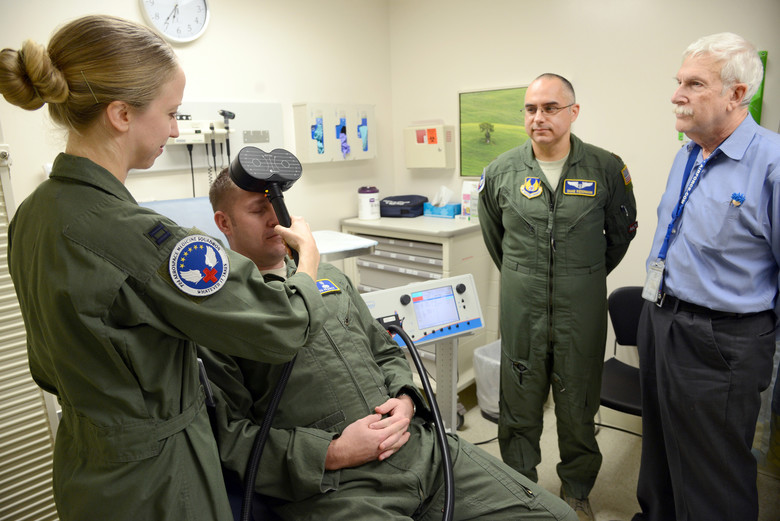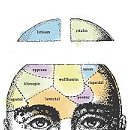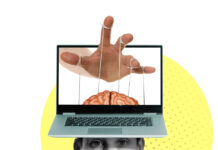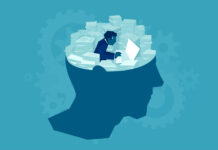A new study, published in JAMA Psychiatry, found that transcranial magnetic stimulation (TMS) was no better than placebo for treatment-resistant depression in a population of veterans. The research was led by Jerome A. Yesavage, MD, at Stanford University, and included the VA Cooperative Studies Program Study Team.
39% of the participants improved so much that they were considered to have remitted from their symptoms—but this was true of both the veterans who received TMS as well as those who received the placebo. There was no difference in remission rates between the two groups.

The study participants were 164 veterans, mostly men, with treatment-resistant depression (defined as no significant improvement after two previous trials of antidepressant medication). Many also had post-traumatic stress disorder (PTSD) and substance abuse problems.
The participants were separated into two groups—the “active treatment” group, which received repetitive transcranial magnetic stimulation (TMS); and the control group, who received a placebo known as “sham stimulation.” In “sham stimulation,” the participants are hooked up to the same machine and told they are receiving active TMS, but are actually not receiving any magnetic stimulation. The study was double-blinded, meaning that medical staff were also unaware of whether the participant was receiving active TMS or “sham.”
The researchers write that they were surprised by the high rate of remission in the placebo group. They suggest that it might be due to “the importance of close clinical surveillance, rigorous monitoring of concomitant medication, and regular interaction with clinic staff in bringing about significant improvement in this treatment-resistant population.” That is, according to the authors, veterans who are labeled “treatment-resistant” may need medical staff to monitor their treatment more regularly.
In an accompanying editorial, Charles B. Nemeroff, MD, PhD, stated that he also found the high remission rate “puzzling.” He cites previous studies that have found remission rates ranging from 28% to approximately 50%. His explanation for this discrepancy is that the participants were engaged more often by the treatment team:
“The repeated engagement of the subjects by the treatment team is not a neutral experience but tantamount to at least supportive psychotherapy, if not more.”
Although the participants were labeled with treatment-resistant depression, according to this acclaimed depression researcher, they may have needed supportive therapy rather than multiple trials of antidepressant medications.
****
Yesavage, J. A., Fairchild, J. K., Mi, Z., Biswas, K., Davis-Karim, A., Phibbs, C. S. . . . George, M. S. (2018). Effect of repetitive transcranial magnetic stimulation on treatment-resistant major depression in US veterans: A randomized clinical trial. JAMA Psychiatry. Published online ahead of print. doi:10.1001/jamapsychiatry.2018.1483 (Link)















Get that machine off of me! 1:24 in Happy Happy Joy Joy https://www.youtube.com/watch?v=DyJibB4cwec
Report comment
Ha ha! That’s what the MI System promised me. But even they couldn’t turn me into a Pollyanna.
Being socially ostracized, unable to have a family, start a career, and gaining over 100% of my body weight did not make me happy. Wow!
Report comment
Another psychiatric success story!
Report comment
I did a report on this. “The circuitry used to generate the magnetic field pulses is usually based on a capacitor discharge system (shown in its simplest form in figure 4) with typical peak coil currents in the range of several kiloamps and discharge voltages of up to a few kilo volts. The relatively high voltage is required to give the required rapid rise of current into the inductance of the stimulating coil.”
They want you to think of harmless refrigerator magnets but its very high energy, IMO its more like magnetic ECT. A magnetic field is used to cause electric current to flow in the brain via induction.
https://www.madinamerica.com/forums/topic/how-transcranial-magnetic-stimulation-works/
It includes videos, you can see hobbyists playing with the “inductance of the stimulating coil” crushing cans and destroying things and some idiot experimenting with it on himself.
Report comment
if it is a magnetic ECT, it looks harmless. no one has complained of memory loss , died from the heart going into Asystole no one went into a continuous seizure.
Report comment
True. I get it.
Report comment
Maybe they could just start giving people tinfoil hats with sciency-sounding names. They could charge people’s insurance just as much as they do for ECT — but at least no one would get brain damage.
Report comment
I bet that would work! But you can’t make billions off of tinfoil. They’d have to come up with some titanium-infused superheated alloy that has to be made in outer space so they could charge bunches of money for their tin hats.
Report comment
They can charge anything they want, they’re doctors.
Report comment
The researchers all sound so disappointed that so many recovered with the placebo. Shouldn’t they be happy they cured the “treatment-resistant”? I know, the doctors don’t want to cure anyone, no money in that!
“Although the participants were labeled with treatment-resistant depression, according to this acclaimed depression researcher, they may have needed supportive therapy rather than multiple trials of antidepressant medications.”
No kidding, haven’t they figured it out yet? The antidepressants themselves work no better than placebo, but they can cause great harm.
Report comment
Yeah, they’re a bit slow on the uptake, aren’t they? How can you call these people “treatment resistant” when you haven’t even tried talking to them? Does this not strongly suggest that it is not “resistance” but “incompetence” that is the reason they have not recovered?
Report comment
Yes, very slow on the uptake. My psychiatrist who’d never listened to me, once confronted with reality, ended up declaring my entire life a “credible fictional story.” I called that “incompetence,” and walked away. Seems complete incompetence is par for the course with today’s psychiatric industry.
Report comment
I hear this too often that clients feel unheard by their doctors. Many clients of mine who have been inpatient tell me they hardly saw a doctor. Glad to hear you walked away.
Report comment
The placebo effect continues to grow in recent studies. The better the participants are blinded, the better are the results in the control group. As the placebo effect is better understood and better controlled, we will see that many psychiatric treatments are just a little effective, or ineffective.
Report comment
Great article and paper!
After 2 failed antidepressants and a godawful prognosis, you basically treat people nicely, do absolutely nothing, and 39% get to complete remission. Looks like the final answer to antidepressants!!
Report comment
EXACTLY! If they created “remission” by essentially doing nothing but telling them they might get better, and more than a third improved as a result, there’s no telling what might happen if they actually started giving clients the impression that THEY could do something about it without any “clinical intervention!” Add in specific, empowering supports and a caring support system, and the “treatment resistant” suddenly start getting better in droves!
Report comment
OK, so this is important. These people were judged “treatment resistant.” Translated into “responsible adult” language, this means that anything they’ve done to date has utterly failed to have any lasting impact. Then we find that pretending to do something that is supposed to help now “remits” 39% of these people for whom STANDARD ‘TREATMENT’ did ABSOLUTELY NOTHING! And Nemeroff, the Big Pharma shill, is “puzzled” by these results, and attributes them to “engagement with the treatment team!”
Obvious conclusions:
1) “Standard treatment” doesn’t work for these people, but pretending to do something while doing nothing does work. Seems less like “treatment resistance” and more like “incompetent clinicians” to me.
2) “Engagement with the treatment team” is MORE IMPORTANT than the “treatment” that you are providing
3) Ergo, STOP PROVIDING ‘TREATMENT’ and START PROVIDING ENGAGEMENT!
Why does this seem obvious to me and yet it is “puzzling” to Dr. Nemeroff?
Report comment
Amen. Actually just talking to people makes a difference. Let’s engage!!!
Report comment
Well maybe they should tray Skywalker light sword on psychiatrists. It’s touch could turn them into humans again, who knows.
Diagnosis of authoritarian mind -psychopathy, no own thoughts, imagination impairment, lack of empathy, tendency to drugging and killing people for money
cure -DEHUMANIZATION, imprisonment, Szasz and Hillman twice a day, and give them some pills or torture them if they were psyche resistant.
psychiatry must be abolished and people who thinks that psyche is EVIL and a state enemy, rather than THE PSYCHIATRY itself – SHOULD BE PUNISHED for not being humans and for not seeing humans in the others, for stealing their identities for not having respect for psyche.
PHENOMENOLOGY OF THE PSYCHE IN THE PLACE OF DSM/ EMPTY NOMINALISM AND PROPER PSYCHOLOGICAL HIERARCHY WITH APOLLONIAN EGO AS THE LEAST PSYCHOLOGICAL ARCHETYPE.
Without phenomenology and without builiding the proper language for describing human psyche, nothing will change. Hillman and Szasz books should be a handbooks in every school.
Report comment
Not that this study isn’t relevant and valid but it has be be included in the broader body or research to see if it’s an outlier or it generally parallels other studies. Anything less is misleading. The placebo effect may be large because, unlike meds, TMS requires some
effort from the patient triggering the effort = results expectation. Just a thought.
Report comment
Hi all. After reviewing the paper, I believe there are some key factors that could help to explain the similarity between the results of the sham group and the treatment group.
– Sham TMS is not ‘nothing’:
In well-designed TMS studies, a number of sham techniques may be used, but all of them involve introducing a low level of pulsed magnetic field to the brain. This is to ensure that a ‘TMS-like’ sensation is still achieved in the sham group. The key difference between sham TMS and treatment TMS lies in the strength of the magnetic field, with sham techniques endeavouring to introduce a lower-strength magnetic field than the treatment TMS technique.
– The TMS coil in this study:
This study used a MagVenture ‘Cool B-65 A/P’ coil, which has an internal mechanism for generating a sham magnetic pulse. The coil has two sides – ‘A’ for ‘Active’, ‘P’ for ‘Placebo’. The coil is flipped between the ‘A’ side during treatment pulses, and the ‘P’ side during sham pulses. The strength of the P-field in this particular coil has been measured at 7.72% of the maximum field strength of the A-field, while the field shape remains comparable for both A and P fields [1].
– Motor Threshold variability between individuals during treatment pulses, and non-variability of the P-field during sham pulses:
Motor Threshold (MT) refers to the level of magnetic pulse strength required to elicit a motor response (for example: a twitching of the finger). Once this MT has been established, it is used as an approximate guide to the appropriate pulse strength delivered to the treatment site of the brain, which in this case was the left pre-frontal cortex.
The intended intensity of treatment pulses in this study was stated as ‘120% of MT’, however, it is possible that not all participants received this high level of treatment pulse intensity, as individual tolerance to pulse strength varies. Whilst the intensity of A-field pulses in the treatment group typically varies between individuals, the intensity of the P-field pulses in the sham group does not, as an individual’s response to the sham TMS is assumed to be negligible.
– Non-linear responses and plateau effects:
An individual’s brain may not necessarily respond linearly to an increased pulse strength, as the brain has natural defence mechanisms to avoid over-stimulation. At low-to-mid pulse strengths, the ‘stimulus-response curve’ may be steeper than at higher pulse strengths [2, 3], due to these natural defence mechanisms. This may mean that at the lower end of the stimulus-response curve, the response is exaggerated, whilst at the higher end of the stimulus-response curve, the response flattens out, or ‘plateaus’. In practical terms, this may mean that the difference in clinical outcome between pulses delivered at, say, 110% and 120% of MT is negligible, while the difference in clinical outcome between pulses delivered at, say, 50% and 60% of MT is significant.
– Putting all of this together:
Sham TMS is not a placebo in the traditional medical sense, but a weaker magnetic field with the potential to induce electrical stimulation within the brain. The P-field was measured at 7.72% of the A-field in the same coil. This is not a nil magnetic field in the sham group, and may well be contributing to neuronal stimulation.
In the treatment group, the intensity of pulses was variable because it depended on individual participants’ MT. In the sham group, the intensity of pulses was fixed, meaning every participant in the sham group received the same level of magnetic pulse stimulation, i.e., 7.72% of the A-field maximum. This may have contributed to the consistency of depression-lifting results seen in the sham group.
The non-linear response of the brain to stimuli strength may have created a ‘diminishing returns’ effect with increased pulse intensity in the treatment (A-field) group. This effect would not have been present in the sham (P-field) group, as the sham-pulse intensity remained constant and low throughout the study.
When these factors are combined, it becomes easier to understand why the outcomes in the sham group were closer to those in the treatment group than might have been expected. The low-level stimulation from the sham coil, the variability in treatment intensity, and the non-linear stimulus-response curve all contribute to the complexity of the overall picture in this study, and help to explain the counter-intuitive results seen here, in which the sham group’s responses approached those of the treatment group.
References:
[1]https://www.ncbi.nlm.nih.gov/pmc/articles/PMC6125221/
[2]https://www.frontiersin.org/journals/psychiatry/articles/10.3389/fpsyt.2022.867091/full
[3]https://jneuroengrehab.biomedcentral.com/articles/10.1186/1743-0003-11-40
*[3] is included for illustration purposes only, as it clearly shows the kinds of non-linear stimulus-response curves and plateau effects I am referring to above.
Note:
*While the P-field strength is measured as 7.72% of the A-field’s maximum output, this percentage does not directly correspond to the Motor Threshold (MT) percentages used to determine individual treatment intensity. The 7.72% refers to the coil’s maximum capacity rather than a personalised stimulation level based on MT.
Report comment